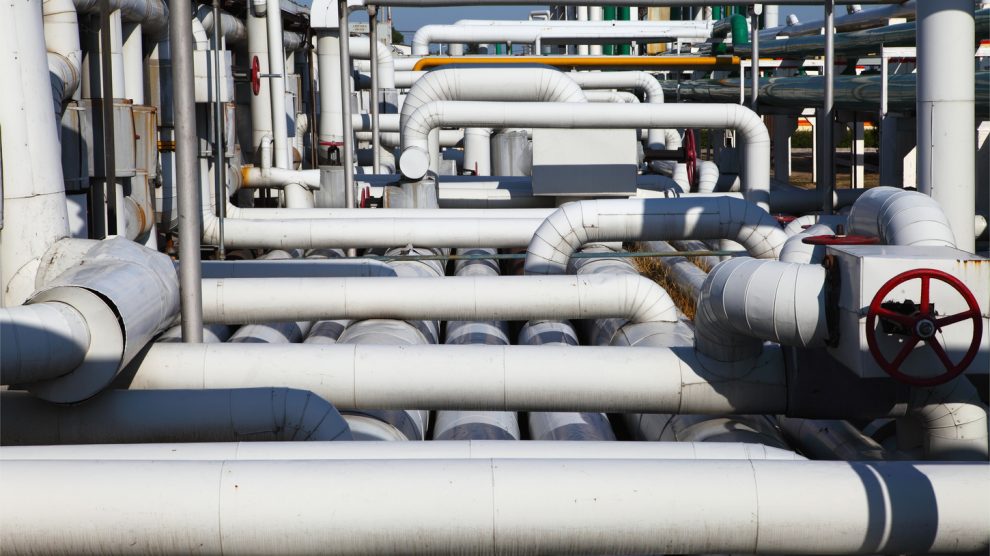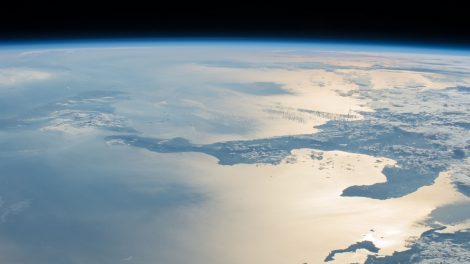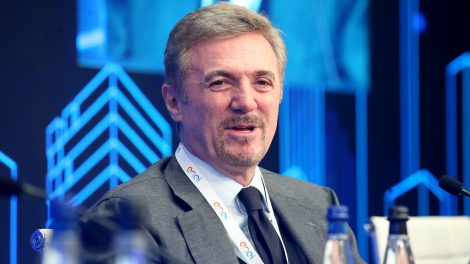“It is important to replace Russian gas,” said Roberto Cingolani, Italy’s Minister for the Ecological Transition. He was speaking at the Berlin Energy Transition Dialogue on Tuesday, when he also met with Robert Habeck, his German counterpart and vice-Chancellor, for a bilateral meeting.
Foreign Minister Luigi Di Maio, too, attended the event the next day and had a bilateral meeting with his counterpart Annalena Baerbock.
Despite reports of the contrary, there is no set deadline for an energy agreement between the two countries. However, the ongoing talks confirm their alignment, which is also evident in their work towards an Action Plan that could be signed in June (barring further complications related to the situation in Ukraine).
Such a plan would allow Italy to close the Berlin-Paris-Rome triangle after signing a bilateral cooperation agreement with France – the so-called Quirinal Treaty – at the end of November.
What Cingolani and Habeck said
Having confirmed that the Ukrainian crisis “will accelerate the ecological transition,” Minister Cingolani said he hoped Italy would have way more renewable energy within a couple of years. “We will replace gas from Russia in the same amount or even a little less, as we are accelerating on renewables and efficiency programmes,” he explained.
He added that the road to 2030 is clear, but the real challenge lies after that date, which marks one of the key European decarbonisation targets. Thus, he said, “we will need a completely different energy landscape. At the moment, I don’t think that energy-intensive countries like Germany and Italy can manage with just renewables and a little gas for programmability.”
Minister Habeck was on the same wavelength. Germany “has put itself in a situation of great energy dependence,” he said, and how it ended up relying so much on Russia “is hard to understand. Now we have to admit that we were wrong. But Germany and Europe, step by step, are now becoming more independent of Russian fossils.”
Diversification: Berlin’s and Rome’s moves
The two countries are already moving to reduce their dependence on Russian gas by diversifying their supplies. A few days ago, Vice-Chancellor Habeck travelled to Qatar and the United Arab Emirates to negotiate the activation of new gas channels towards Germany. Berlin also optioned three floating regasification stations (FRSUs) and is building several regasifiers – which will be ready between 2022 and 2023 – to reconvert sea-shipped LNG.
Italy is also on the move: while the government is negotiating the acquisition of several FRSUs, Minister Di Maio has already flown to Algeria, Angola, Azerbaijan, Congo and Qatar to negotiate an increase in duct-delivered supplies. Meanwhile, there are talks around expanding existing infrastructures, ranging from doubling the Trans Atlantic Pipeline to resuming the work to open the long-postponed EastMed/Poseidon.
The Germany-Italy strategic axis
If analysed with gas in mind, the agreement between Germany and Italy can become one of the cornerstones of the European energy transition. The former is Europe’s largest economy; the latter is the third. Both have focused on natural gas as a vector for decarbonisation and see renewables as the final stage. And since Russian methane has become “toxic,” Italy’s importance has increased by several orders of magnitude.
The country’s geographic position and its energy interconnections, from its electricity network to its gas pipelines, make it a natural hub in the Mediterranean area, across which power flows northwards. Furthermore, there’s an EU-wide drive towards hydrogen, which can be progressively hybridised with methane in the pipelines (with small, relatively inexpensive adjustments) until it hopefully replaces it. This is also the direction in which green EU investments are heading, along with US investments in the EU.
Today the problem lies upstream: electrolysis is a very energy-intensive process, and to produce green hydrogen we can only resort to zero-carbon sources – renewables. The same applies to North African and Sahelian countries, where Italy, Germany and the European Union are pouring billions in investments. By stabilising and strengthening the local industry and barring instances of “green colonialism,” the aim is to import clean electricity (via cable), as well as methane, and when the renewable infrastructure allows, hydrogen (via pipeline).
Buck’s take (AHK Italien)
“Following Ukraine’s invasion, the energy issue, which has been central since the end of 2021, has taken on a new urgency. The sanctions against Russia have shown how energy dependence on Moscow is problematic both politically and economically,” said Jörg Buck, managing director of the Italian-German Chamber of Commerce (AHK Italien) and delegate of the German economy in Italy.
He told Decode39 that those two countries are among those most affected by such dependence. The close interconnection of their economic systems “makes it necessary to plan the exit from Russian energy supply circuits jointly, with common strategies of mutual support.”
Mr Buck also added that Rome and Berlin had been working on common positions. “I am thinking of Minister Baerbock’s Aktionsplan or the discussion on the European taxonomy,” he said, stating that the future solidarity agreement is a step in the right direction. “By supporting each other in reshaping value chains, the two countries are safeguarding their partnership and role in the European context and giving Moscow a strong signal,” he concluded.




